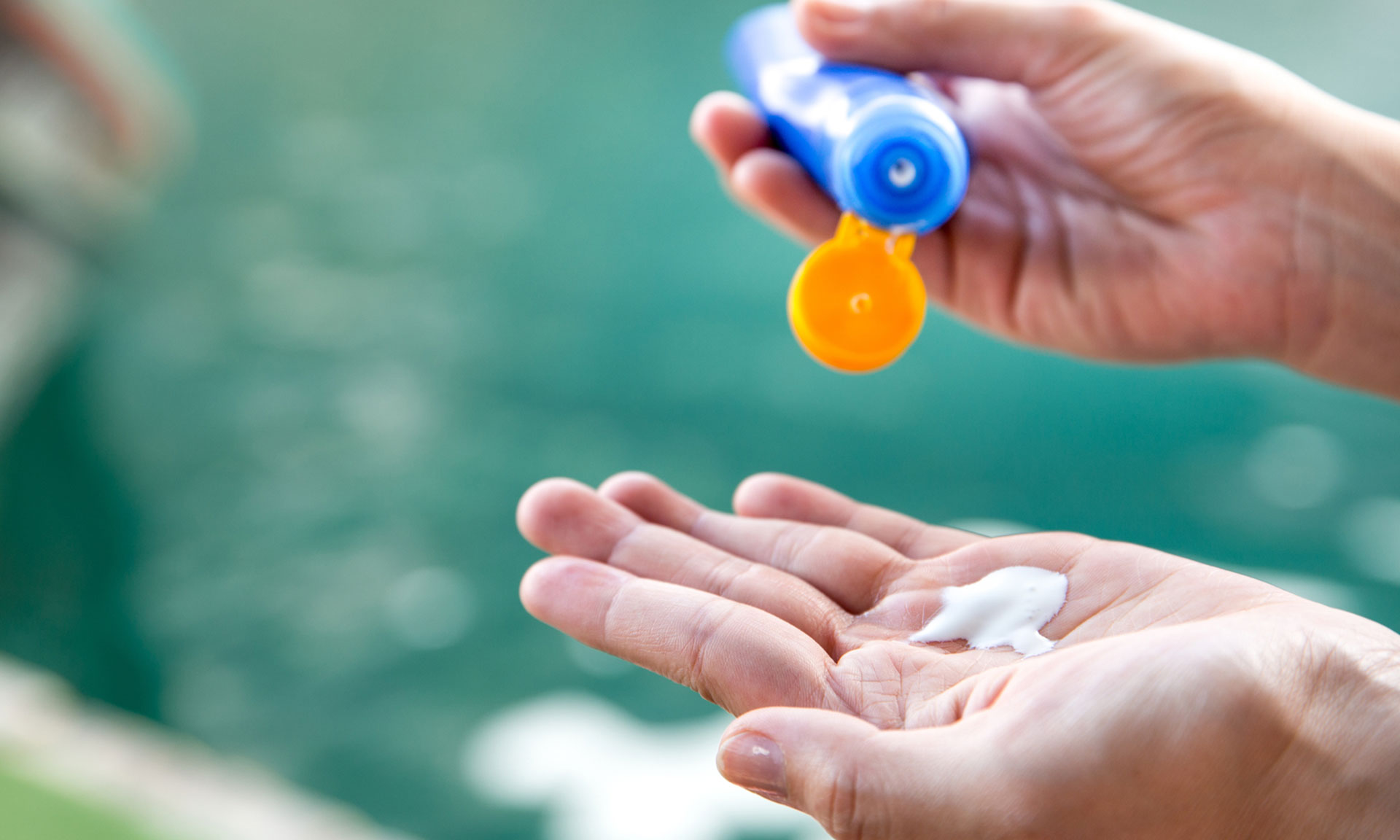By clicking a retailer link you consent to third-party cookies that track your onward journey. This enables W? to receive an affiliate commission if you make a purchase, which supports our mission to be the UK's consumer champion.
Five things you should never do with sun cream

Sun cream is an important part of avoiding sunburn, so it's vital that you pick a product to help protect you.
But using sun cream correctly is more complicated than you might expect. Confusing claims combined with common misconceptions can easily lead to compromised sun safety.
See our sun cream reviews to discover which sun creams passed our tests.
1. Don't confuse 'water resistant' and 'waterproof'
Some 95% of the sun creams we've tested over the past five years are claimed to be water resistant - but this doesn't mean they're waterproof.
The European industry guideline for water-resistant sun creams allows the SPF of a product to drop by 50% after a total of 40 minutes in tap water.
Overseas, however, the SPF must be what the sun cream offers after immersion.
Water-resistance tests take place with volunteers sitting in what is essentially a bath, using tap water.
We tested two popular sun creams in chlorinated water (to mimic a swimming pool) and salty water (to mimic the sea), and added another scenario using fast-moving tap water to see what effect this had.
Video: water-resistance warning
Watch our video to see what happened in our tests.
Most of the time the sun creams weren't as effective in our more realistic conditions as they were in tap water. That means if you buy an SPF30 sun cream, it can drop to SPF15 - or less - after you swim.
If you're spending time in the sun at the beach or by the pool, be careful to reapply sun cream when you leave the water.
2. Don't rely on 'once a day'
You've probably seen 'once a day' sun creams on the shelves of your local pharmacy or supermarket, and there's no denying that the idea of not having to reapply regularly is appealing.
But when Which? tested four 'once a day' sunscreens to see whether they would really protect you in the sun, we found that none was up to the job. The average drop in SPF after six to eight hours was 74%.
There's no universal standard that sun cream manufacturers have to adhere to when making a 'once a day' claim, although when we asked sun cream companies that make this claim they assured us that they do multiple tests in order to justify it.
The industry body for sun cream manufacturers, the Cosmetics, Toiletries and Perfumery Association (CTPA) told us that the industry is moving away from 'once a day' claims, now preferring the term 'durable sunscreen'.

3. Don't buy one that's sticky or greasy
Some sun creams feel sticky or greasy and leave skin covered in a chalky white residue, which means you end up not using them or applying too little.
An easy way to ensure you get into the habit of regularly applying sun cream is to pick one that's nice to use.
We've found three sun creams that not only provide protection from UV radiation from the sun, but they're also pleasant to apply. Two of them also happen to be more affordably priced than the typical sun cream.
<

4. Don't use SPF to spend too long in the sun
This might sound counterintuitive - surely using sun cream is supposed to mean we can spend more time in the sun?
Not exactly. Sun cream is meant to help protect our skin from incidental sun exposure. It shouldn't be used to justify spending long periods in the sun or to help with bronzing.
There's no such thing as a 'healthy tan' - any tan is a sign that your skin has been damaged.
Studies have shown that people who use high SPFs stay out for longer in the sun. Plus sun cream users are also more likely to have been sunburnt multiple times than those who avoid the sun.
This all comes down to the ways we think about and use sun cream. It can only offer so much protection - and you shouldn't rely on sun cream alone.
During hot weather you should use sun cream alongside sunglasses, a hat, clothing and breaks in the shade.
5. Don't apply too little sun cream
It's unlikely that you're applying enough sun cream - in fact, most of us apply less than half of the amount we should.
A sun cream's SPF (sun-protection factor) is measured using a test that requires a set amount to be applied - 2mg per square centimetre of skin, to be precise. So in order for your sun cream to offer the protection claimed, you need to apply the same amount on your skin.
This means that a full-body application for the typical adult is 35ml. That's seven teaspoons: one for the head and neck, one for each arm and each leg, one for your back and one for your torso.
Applying less sun cream can have a big impact on the protection you receive - using half as much sun cream means you get as little as a third of the claimed SPF.
Sun cream also needs to be reapplied regularly to remain effective - slather more on at least every two hours.





